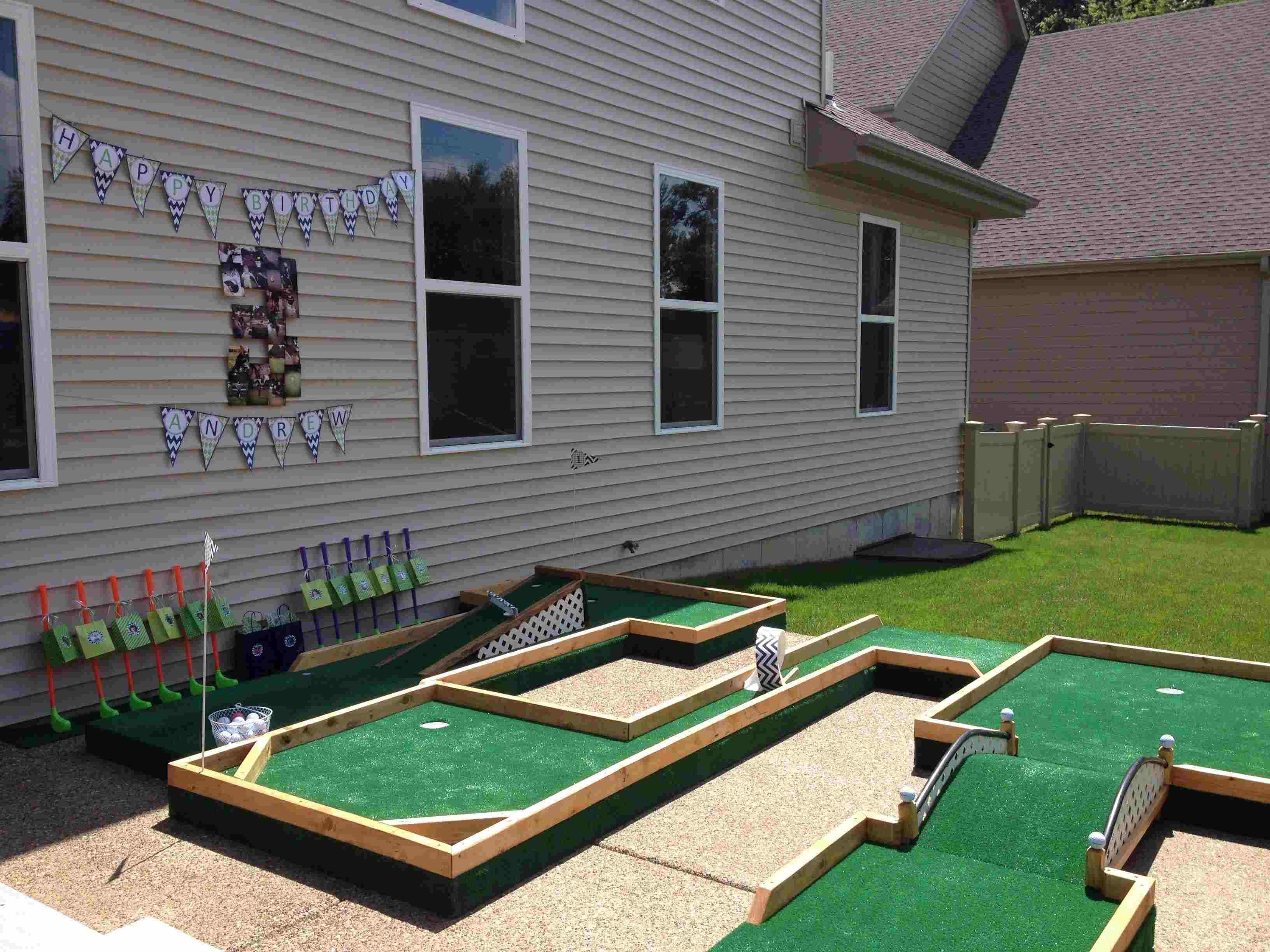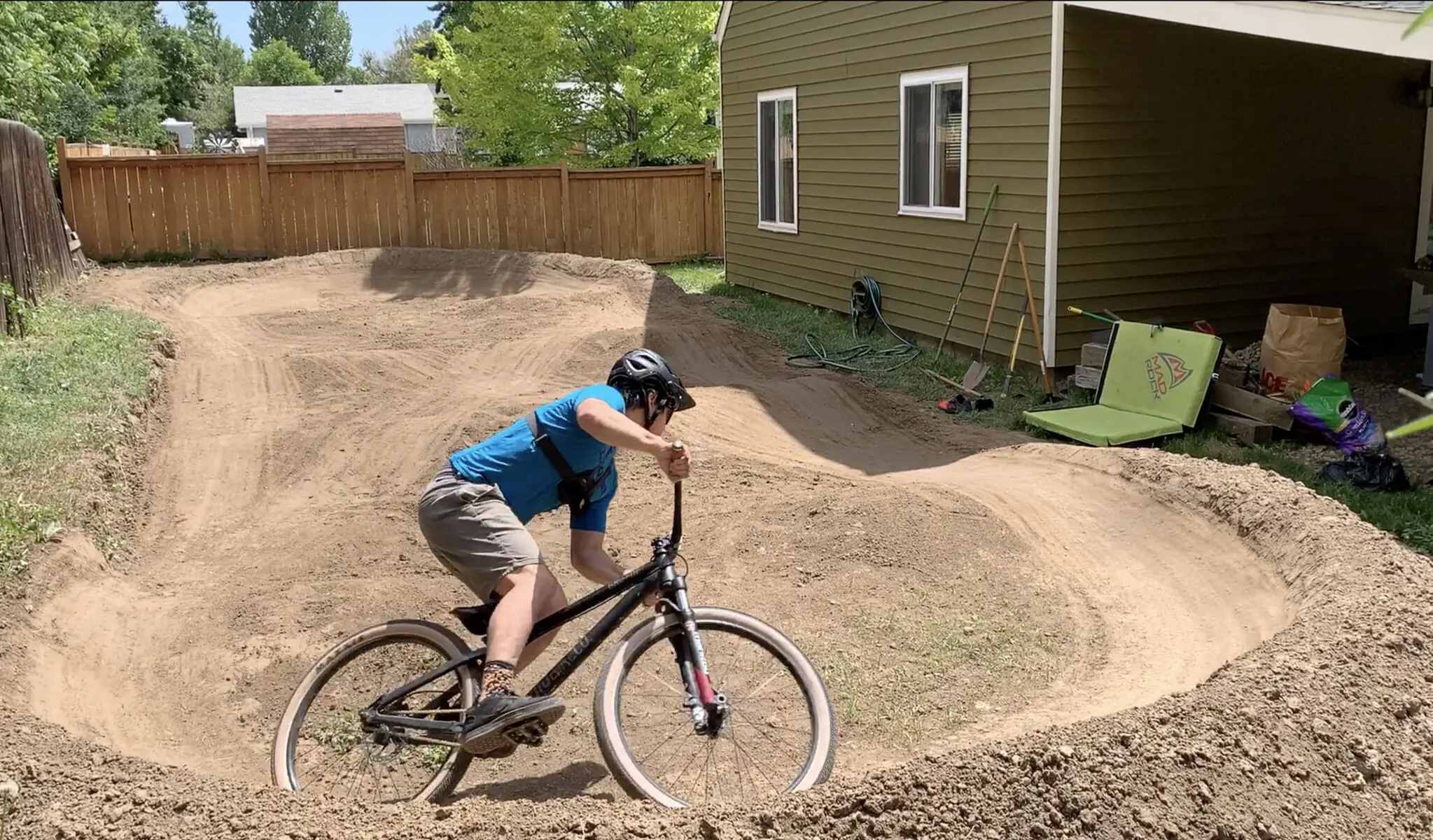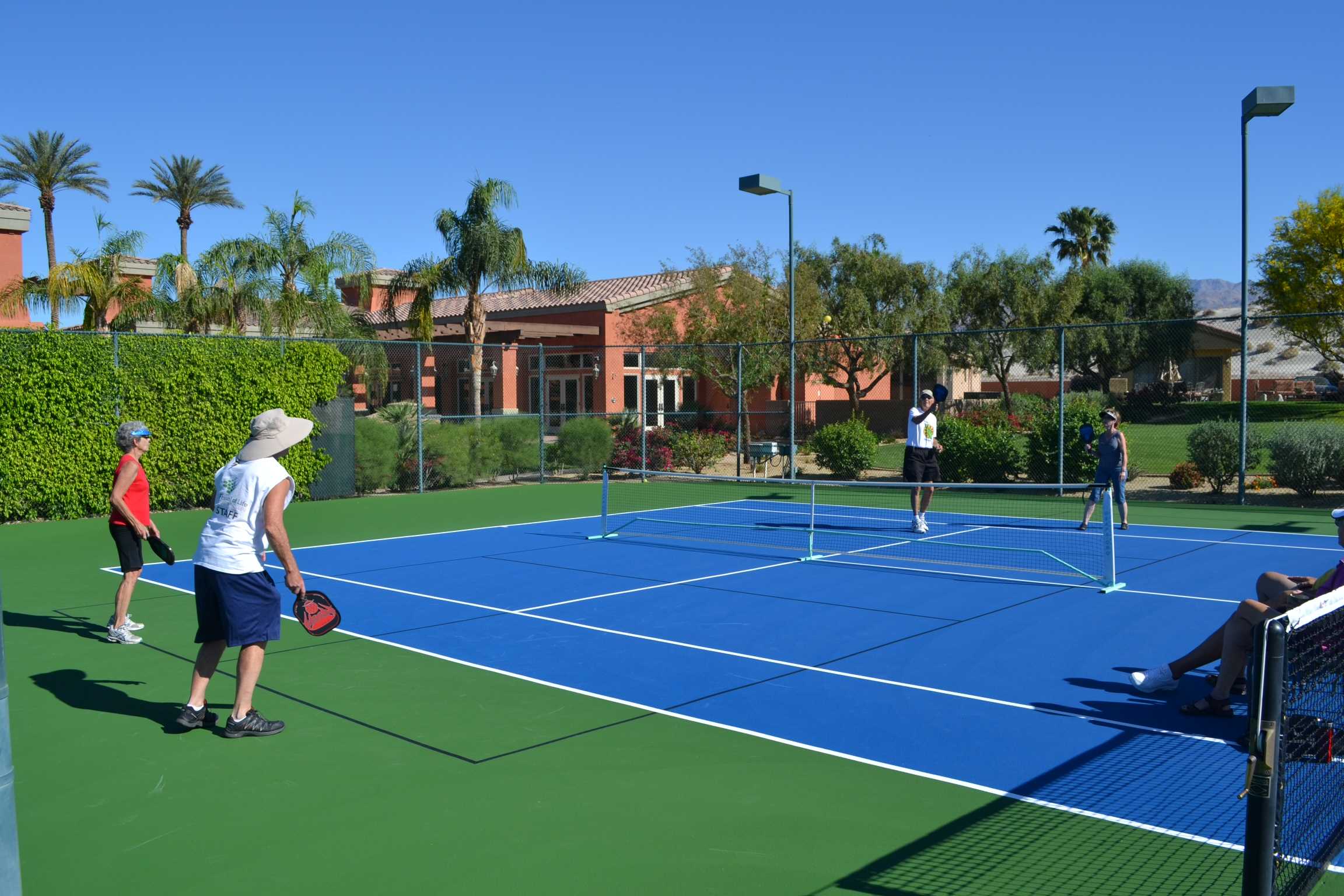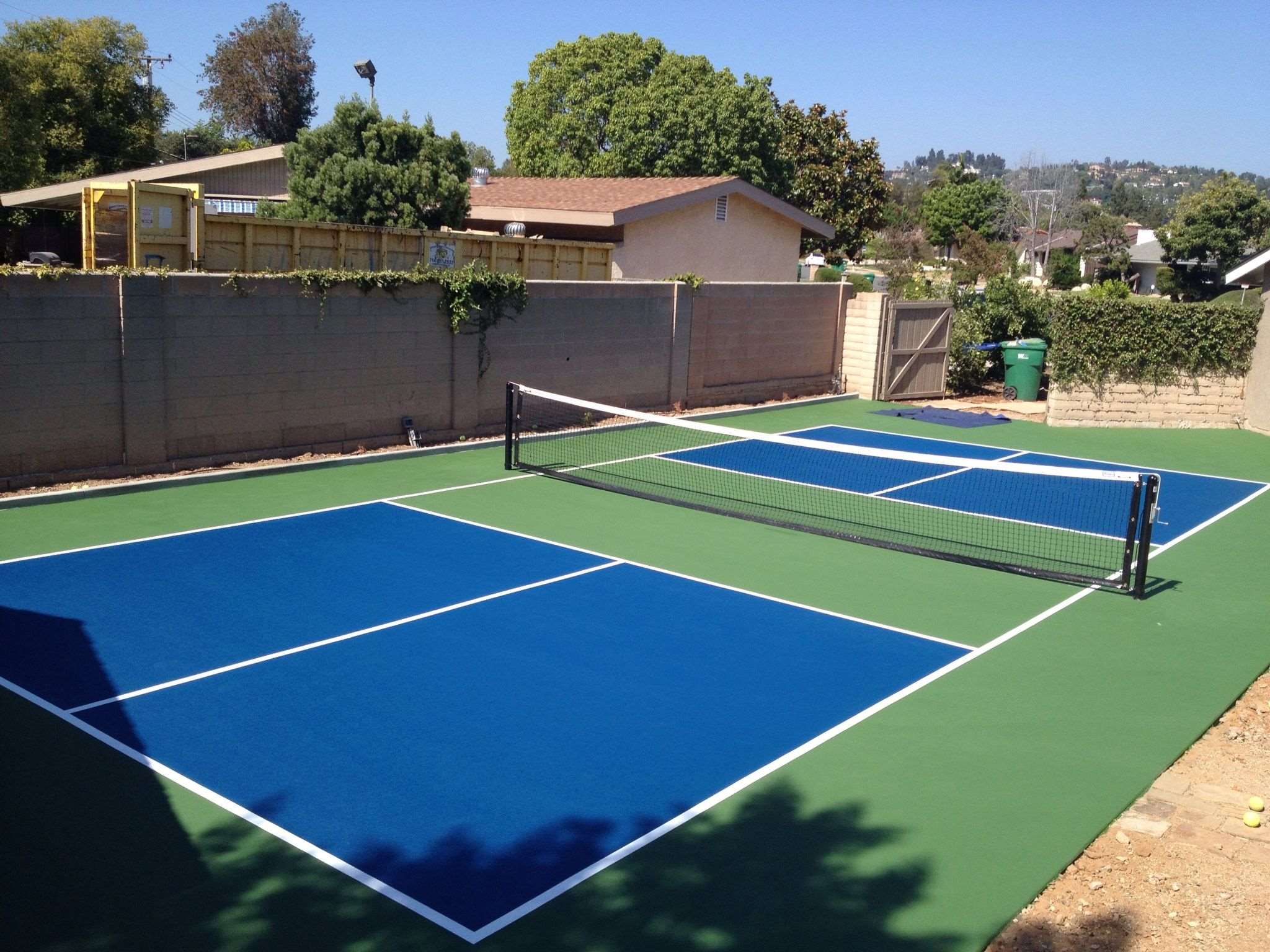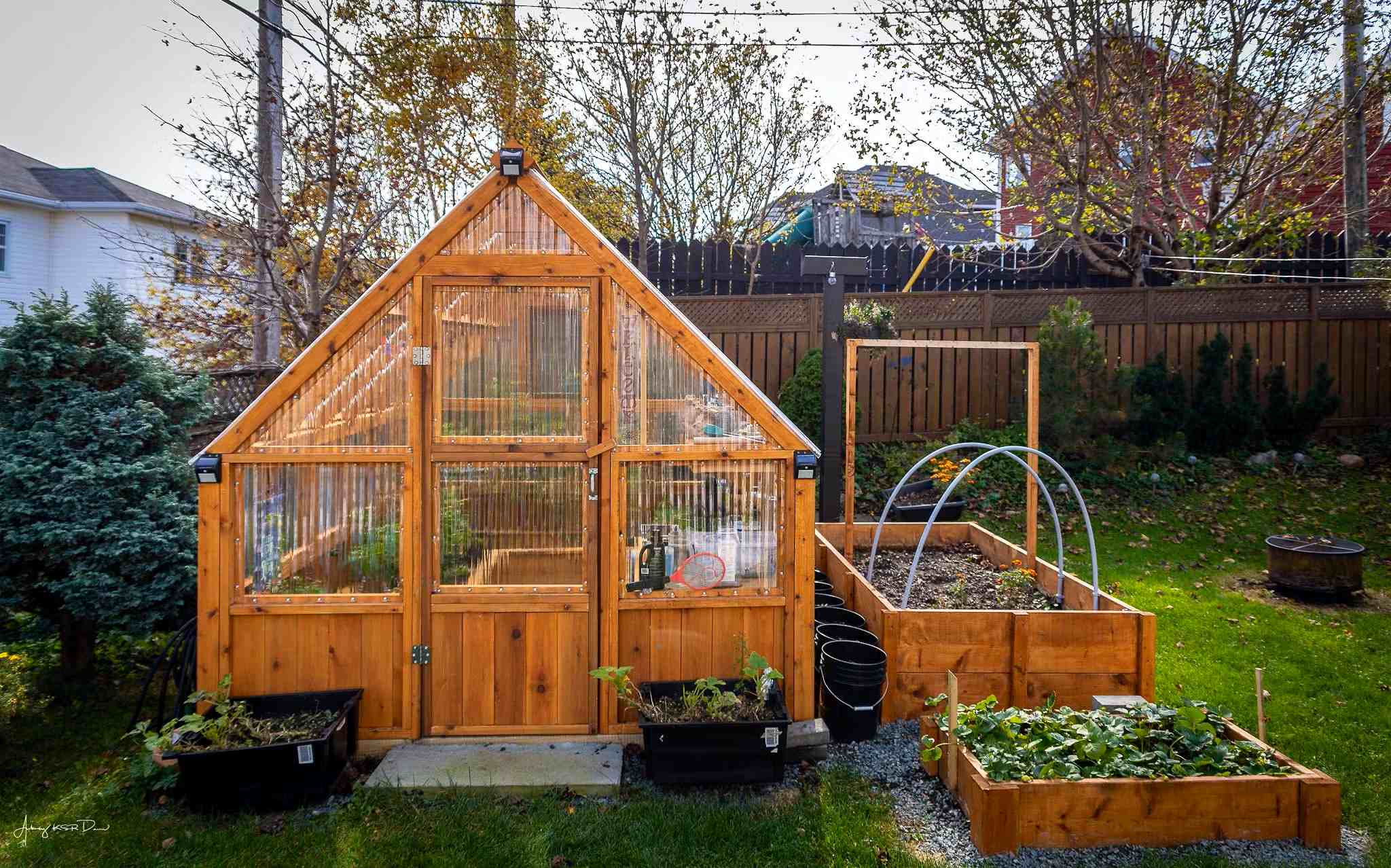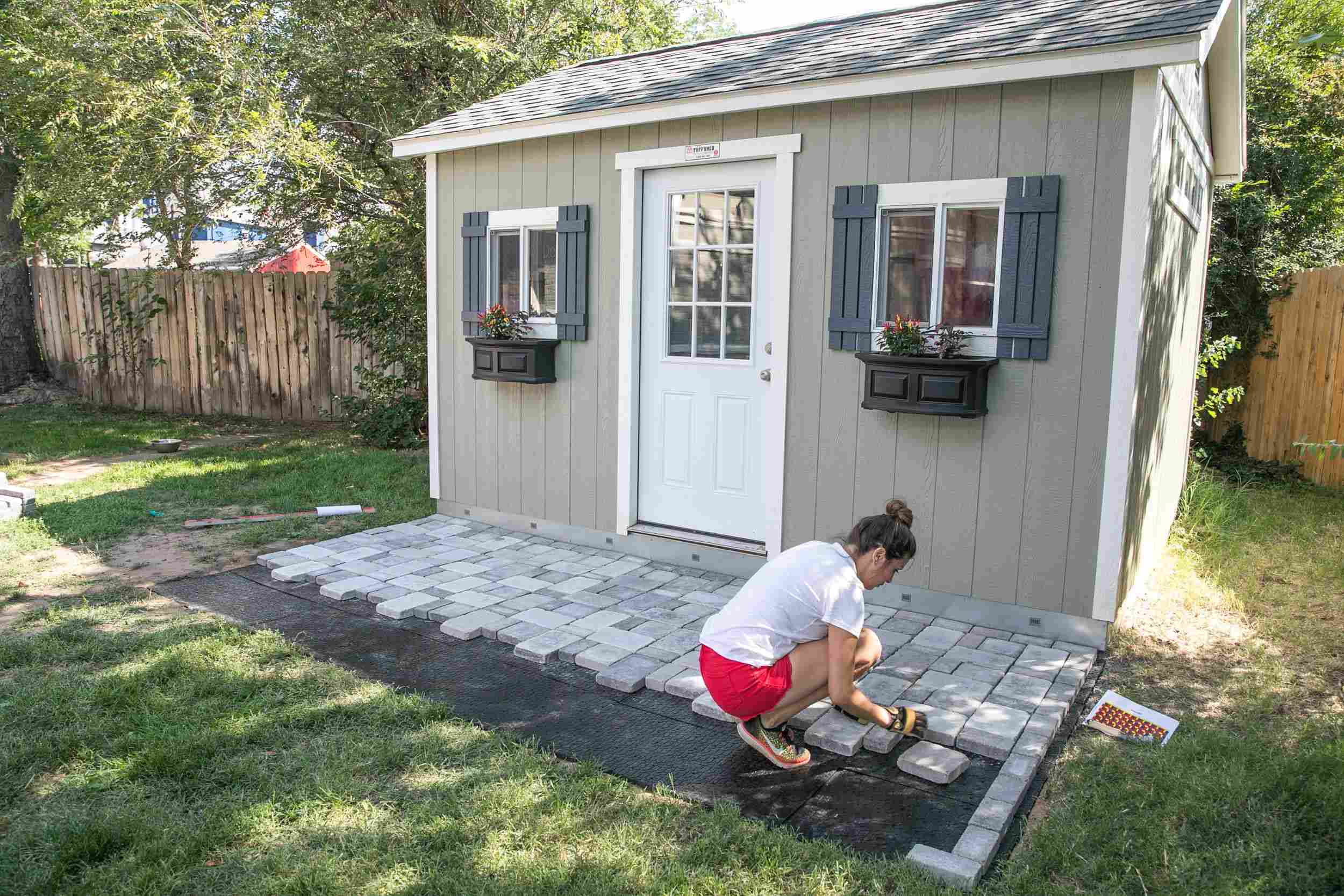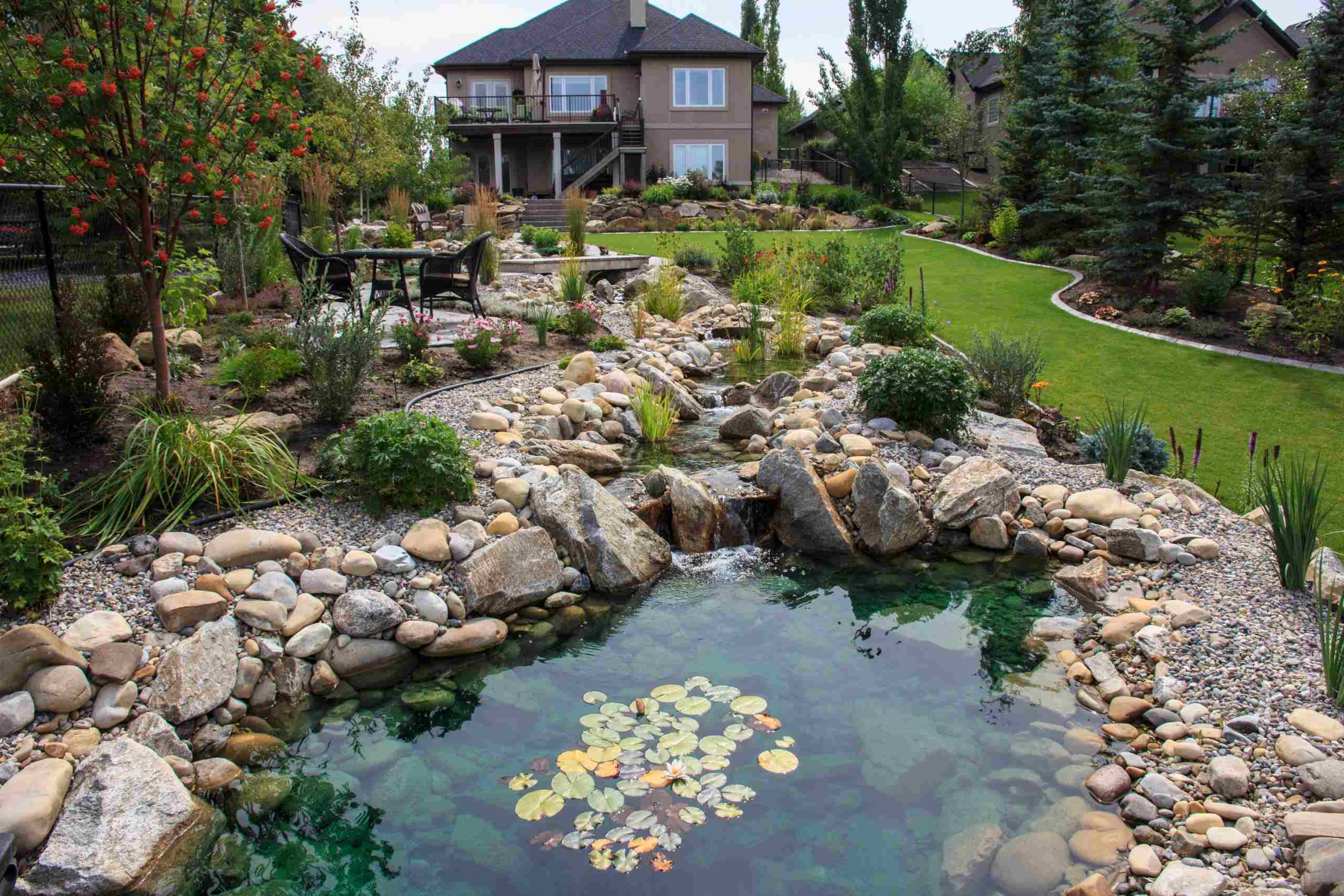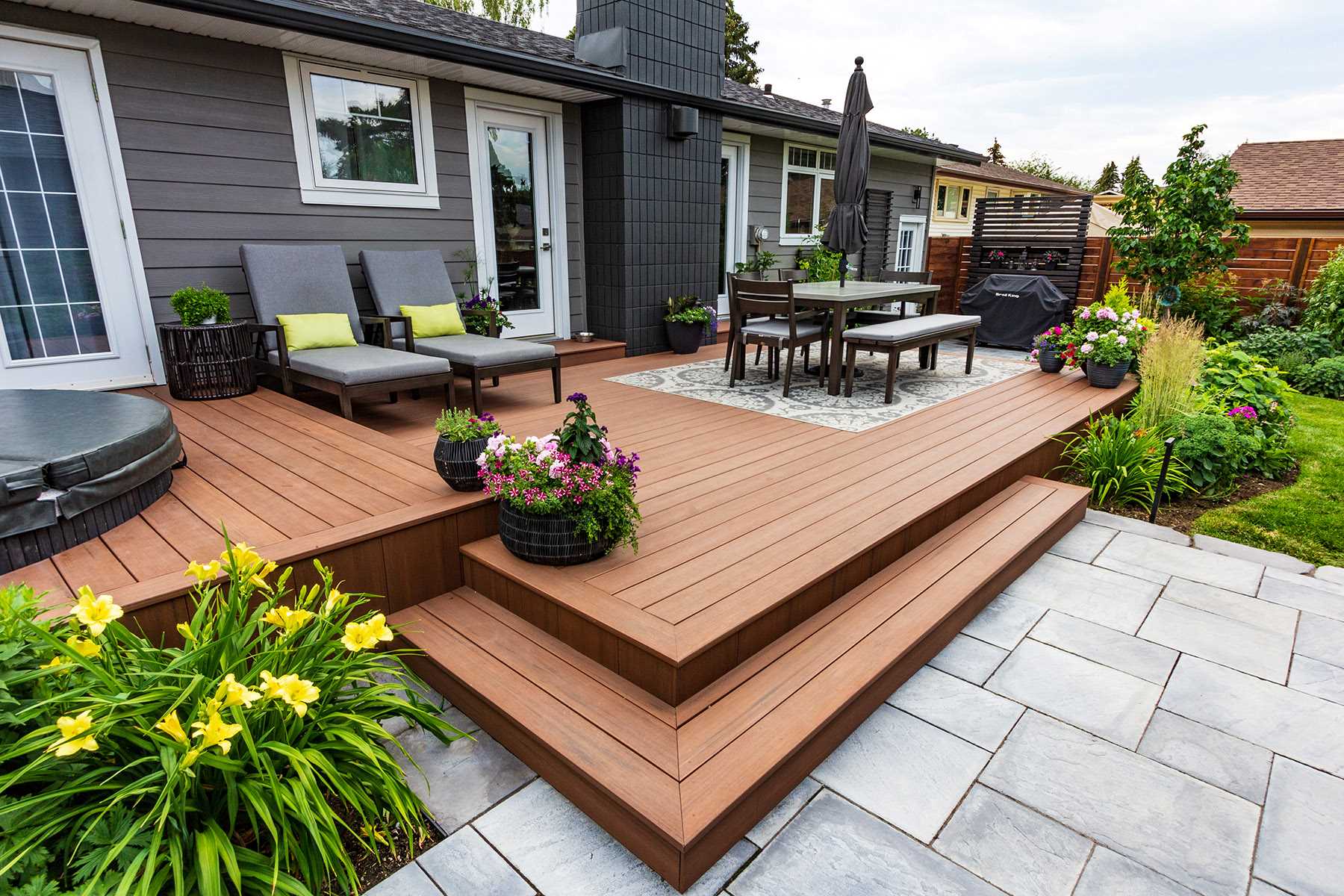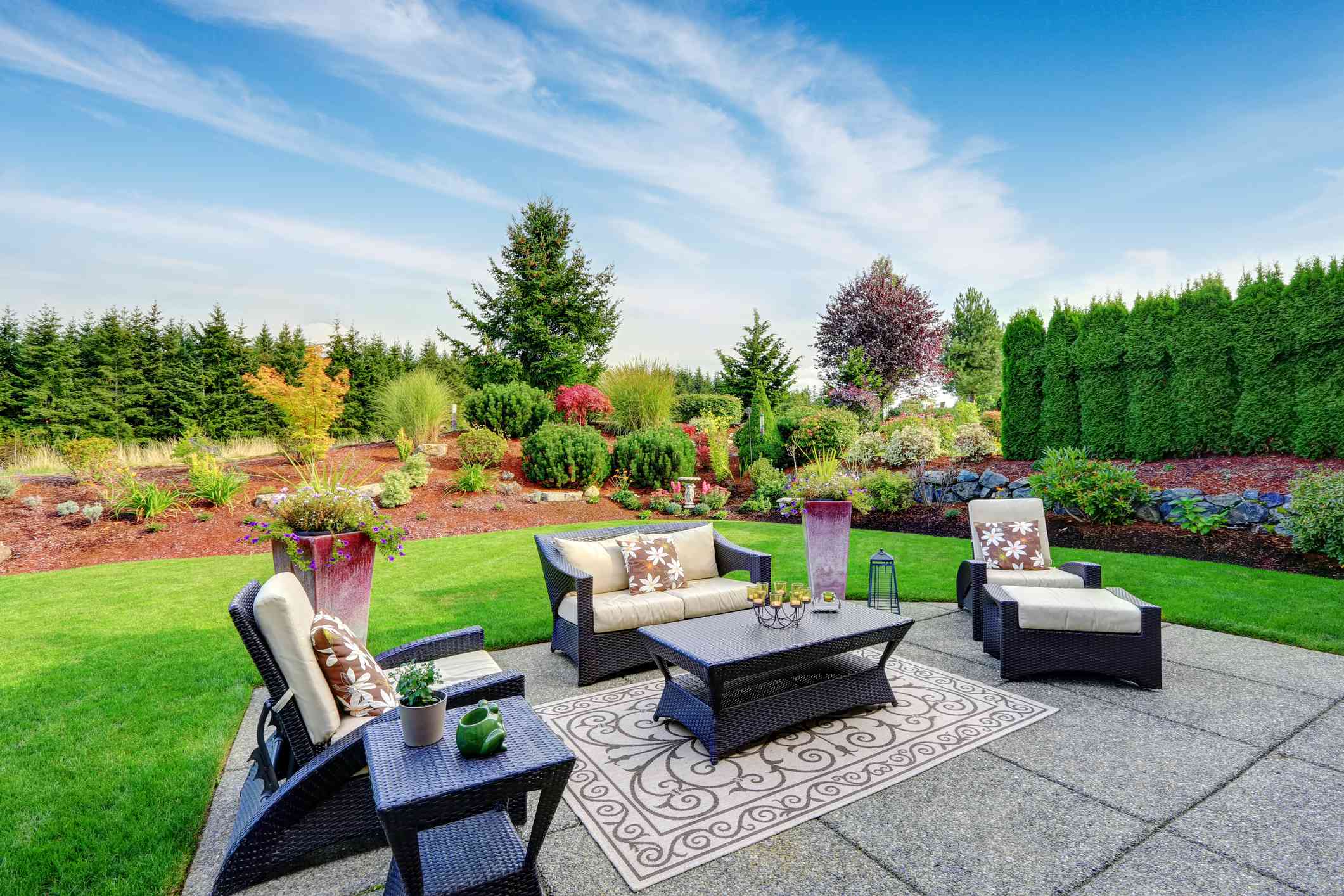Home>Gardening Techniques>DIY Projects>How To Build A Pool In Your Backyard
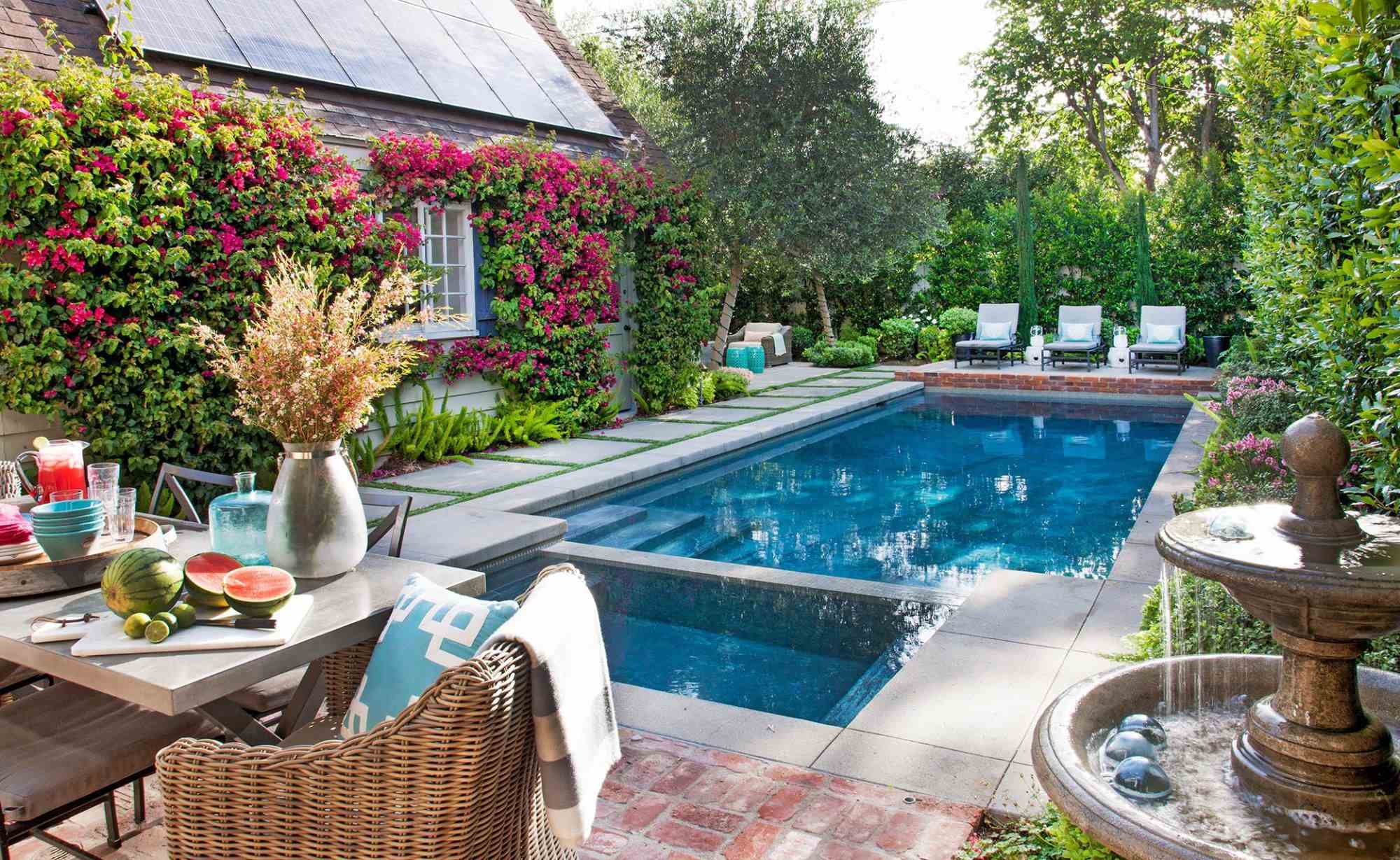

DIY Projects
How To Build A Pool In Your Backyard
Modified: January 22, 2024
Learn how to build a pool in your backyard with this DIY project guide. Create the pool of your dreams and enjoy endless summer fun.
(Many of the links in this article redirect to a specific reviewed product. Your purchase of these products through affiliate links helps to generate commission for Chicagolandgardening.com, at no extra cost. Learn more)
Table of Contents
- Introduction
- Step 1: Planning
- Step 2: Obtain Necessary Permits
- Step 3: Determine Pool Type and Size
- Step 4: Select a Spot
- Step 5: Excavation and Ground Preparation
- Step 6: Installation and Assembly
- Step 7: Plumbing and Electrical Connections
- Step 8: Adding Pool Liner
- Step 9: Filling the Pool
- Step 10: Pool Decking and Finishing Touches
- Conclusion
Introduction
Welcome to the world of DIY home projects! Building a pool in your backyard is an exciting and rewarding project that can transform your outdoor space into a luxurious oasis. Whether you want a place to relax and unwind, host outdoor gatherings, or provide a fun play area for the whole family, a backyard pool offers endless possibilities.
While the idea of constructing a pool may seem daunting at first, with proper planning and the right tools, you can successfully bring your vision to life. This comprehensive guide will take you through each step of the process, from planning and permits to the final finishing touches.
Before diving in, it’s important to note that building a pool involves a considerable investment of time, effort, and money. However, the sense of accomplishment and enjoyment you’ll experience once the project is complete is well worth it.
So, if you’re up for the challenge and ready to take the plunge, let’s get started on creating your dream backyard pool!
Step 1: Planning
Before you begin the actual construction of your pool, careful planning is essential. This step sets the foundation for a successful project and ensures that you have a clear vision of what you want to achieve.
Firstly, consider the purpose and function of your pool. Are you looking for a relaxing oasis or a space for entertaining guests? Understanding how you will use the pool will help you determine the right size, shape, depth, and design features to incorporate.
Next, evaluate your budget. Pools come in a wide range of styles and prices, so it’s crucial to establish a realistic budget that includes not only the cost of materials and equipment but also any additional expenses, such as landscaping or maintenance.
Additionally, check with your local zoning department to understand any regulations or permits required for pool construction. It’s important to comply with building codes and obtain the necessary approvals before proceeding.
Another vital aspect of the planning stage is considering the layout and placement of the pool in your backyard. Take into account factors such as the availability of sunlight, proximity to utilities, and accessibility. You may also want to think about the overall aesthetic of your backyard and how the pool will integrate with existing landscaping or outdoor structures.
Furthermore, research different pool types and materials to determine which one best suits your needs and preferences. Options range from traditional concrete and vinyl pools to modern fiberglass or stainless steel designs. Each type has its pros and cons in terms of durability, maintenance, and cost, so make sure to weigh these factors before making a decision.
Lastly, consider any additional features you want to incorporate into your pool design. This could include waterfalls, slides, lighting, or even smart pool technology. These features can enhance the functionality and visual appeal of your pool, so think about what elements would complement your overall vision.
By thoroughly planning your pool project, you’ll have a solid roadmap to follow and confidence in the decisions you make along the way. So take the time to explain your goals, establish a budget, research regulations, and consider all the design elements before moving on to the next step.
Step 2: Obtain Necessary Permits
Before you can start building your backyard pool, obtaining the necessary permits is crucial. These permits ensure that your pool construction meets local building codes and regulations, ensuring safety and compliance.
The specific permits required for pool construction may vary depending on your location, so it’s important to check with your local zoning department or building authority. They will provide you with the requirements and guidelines you need to follow.
Generally, you will need to submit an application along with detailed plans and specifications of your pool. The application process may involve submitting documents, paying fees, and scheduling inspections at various stages of the construction process.
Some of the common permits you may need include:
- Building permit: This permit is the most common requirement and ensures that your pool construction adheres to building codes and regulations. It covers aspects such as safety barrier fencing, structural integrity, and plumbing/electrical connections.
- Electrical permit: If your pool requires electrical components such as lighting, pumps, or heaters, you will likely need an electrical permit to ensure proper installation and safety.
- Plumbing permit: If you are adding water features or installing a pool with complex plumbing systems, a plumbing permit may be necessary to ensure proper installation and prevent any potential leaks or drainage issues.
It’s important to note that attempting to build a pool without the required permits can result in fines, penalties, or even legal consequences. It’s always best to follow the appropriate steps and obtain the necessary permits to ensure a smooth and hassle-free construction process.
Once you have obtained your permits, make sure to keep a copy of them on-site during the construction process. This will allow inspectors to easily verify that your project is in compliance with the approved plans.
By taking the time to navigate the permitting process and obtaining the necessary approvals, you can be confident that your pool construction is meeting all the legal requirements and building codes. This will contribute to the overall success and safety of your pool project.
Step 3: Determine Pool Type and Size
One of the most important decisions you’ll make when building a pool in your backyard is choosing the right type and size. The type of pool you select will depend on your preferences, budget, and the available space in your yard.
The three main types of pools to consider are:
- Concrete: Concrete pools offer ultimate customization since they can be designed to fit any shape or size. They are built on-site, allowing for complete flexibility in design. However, they tend to be more expensive and time-consuming to construct compared to other types.
- Vinyl Liner: Vinyl liner pools consist of a pre-constructed frame that is lined with a vinyl membrane. They are relatively quick and cost-effective to install. However, they may require liner replacements every 7-10 years, increasing long-term maintenance costs.
- Fiberglass: Fiberglass pools are manufactured in a factory and then transported to your location for installation. They are known for their durability and low maintenance. While they offer less design flexibility than concrete pools, they often have built-in features such as steps and seating areas.
Once you’ve determined the type of pool, you need to consider the size. The size of your pool will depend on the available space in your backyard and how you plan to use it. Consider factors such as the number of people who will be using the pool, their age, and the activities you want to enjoy in the pool.
It’s important to strike a balance between having enough space for swimming and activities while still leaving room for landscaping, decking, and other outdoor features.
Consulting with a pool contractor or professional can help you determine the ideal size for your backyard. They can also assist in understanding any local regulations or restrictions regarding pool size and setbacks.
Remember, before finalizing your pool type and size, take into account your budget, maintenance requirements, and desired features. This will help ensure that your chosen pool type and size align with your overall vision and long-term goals for your backyard oasis.
Step 4: Select a Spot
Choosing the right spot for your backyard pool is a crucial step in the construction process. The location you select will impact the overall aesthetics, functionality, and accessibility of your pool.
Here are some key factors to consider when selecting a spot for your pool:
- Orientation to the Sun: Take note of the sun’s path throughout the day and choose a spot that receives ample sunlight. This will help you maximize the hours of sunlight and warmth experienced by your pool, ensuring comfortable swimming conditions and efficient heating if you choose to install a pool heater.
- Proximity to Utilities: Consider the location of utility lines such as water, gas, and electricity. You will need easy access to these utilities for pool filtration systems, lighting, and other electrical components. If the area you choose is far from these utilities, it can significantly impact the cost and complexity of the installation process.
- Privacy and Aesthetics: Evaluate the privacy of the chosen spot. Consider the surrounding landscape, neighboring properties, and any potential obstructions such as trees or fences. You may want to select a location that provides a sense of seclusion and tranquility, allowing you to fully enjoy your pool without feeling exposed.
- Drawing Focus and Integration: Assess how your pool will fit into the overall layout of your backyard. Consider how it will integrate with other outdoor features and landscaping. You can use the pool as a focal point or align it with existing elements such as patios or decks to create a harmonious and cohesive design.
Additionally, it’s important to check local regulations or homeowners’ association guidelines that may dictate setback requirements or dictate where pools can be placed in relation to property lines or structures.
Before finalizing the spot, mark the outline of the pool on the ground using stakes or spray paint. This will give you a visual representation of its size and shape and help you determine if the chosen spot is suitable.
Selecting the right spot for your pool will enhance its functionality, visual appeal, and long-term enjoyment. Take the time to evaluate these factors before moving forward with the construction process.
Step 5: Excavation and Ground Preparation
With the spot selected, it’s time to move on to one of the most important steps in building your backyard pool: excavation and ground preparation. This process involves digging out the area to make room for the pool structure and ensuring a solid foundation.
Here are the key steps involved in this stage:
- Clear the area: Remove any existing vegetation, rocks, or debris from the designated area. This will provide a clean slate for the excavation process and help prevent any potential damage to the pool structure.
- Mark the pool layout: Use stakes and strings to outline the dimensions and shape of the pool. This will serve as a guide for the excavation process and ensure accurate dimensions.
- Excavate the area: Depending on the size and shape of your pool, excavation may involve manual digging, using a backhoe, or hiring professional excavation services. The depth of the excavation will depend on the planned pool depth, plus any additional space needed for the pool base and other structural elements.
- Check for levelness: Once the excavation is complete, check the levelness of the pool area using a laser level or level measuring tools. This ensures that the pool will have a sturdy and balanced foundation.
- Prepare the ground: Create a solid base for your pool by adding a layer of compacted gravel or sand. This helps to level the ground further, improves stability, and protects the pool structure from any potential shifting or settling.
- Install necessary utilities: Before proceeding with the next steps, ensure that all necessary plumbing, electrical, and drainage connections are in place according to the pool design and specifications.
It’s important to note that excavation and ground preparation can be a challenging and time-consuming process. If you’re not confident in your ability or don’t have the necessary equipment, it’s recommended to hire professional excavators who specialize in pool installations.
Throughout the excavation and ground preparation process, regular inspections are essential to ensure that the work is performed correctly and meets the standards set by your local building codes. Make sure to consult with a pool professional to ensure that proper techniques and practices are followed during this crucial stage.
By properly excavating and preparing the ground, you set the foundation for a stable and durable pool structure. This step is crucial to ensure the long-term integrity and functionality of your backyard pool.
Step 6: Installation and Assembly
With the ground prepared, it’s time to move on to the exciting phase of installing and assembling your backyard pool. This step involves constructing the pool structure, including the walls, flooring, and support systems.
Here are the key steps involved in the installation and assembly process:
- Frame assembly (for non-concrete pools): If you are installing a vinyl liner or fiberglass pool, this step involves assembling the pre-constructed frame according to the manufacturer’s instructions. Ensure that all components fit securely and align properly.
- Concrete shell construction (for concrete pools): If you have opted for a concrete pool, this step involves forming and pouring the concrete shell. This task requires specialized knowledge and skills, so consider hiring a professional or consult a pool contractor to ensure proper construction.
- Wall installation: Secure the pool walls to the pool frame or concrete shell. This step may involve attaching the walls using bolts, screws, or other specialized connectors, depending on the pool type.
- Floor installation: For vinyl liner and fiberglass pools, install the pool flooring according to the manufacturer’s instructions. This may involve placing a layer of sand or vermiculite and smoothing it out to create a level surface for the liner or fiberglass shell.
- Support system installation: Install any necessary support systems, such as braces, straps, or structural reinforcements. These components provide stability and structural integrity to the pool.
- Inspect for leaks: Before proceeding to the next steps, conduct a thorough inspection to ensure there are no leaks or structural defects in the pool. Look for any signs of water seepage or cracks and repair them immediately, if necessary.
During the installation and assembly process, it is crucial to follow the manufacturer’s instructions and industry best practices. This ensures that the pool is constructed properly, adheres to building codes, and will provide years of enjoyment.
If you are not confident in your ability to install and assemble the pool yourself, consider hiring professional pool contractors who specialize in pool installations. They have the expertise, experience, and equipment to ensure that the construction process is done correctly and efficiently.
Remember, each pool type may have specific requirements and installation procedures, so consult the manufacturer’s guidelines to ensure that all steps are followed correctly. Taking the time to properly install and assemble your pool will result in a sturdy, reliable, and safe pool structure for years to come.
Step 7: Plumbing and Electrical Connections
Once the pool structure is in place, it’s time to move on to the crucial step of connecting the plumbing and electrical systems. This step ensures that your pool operates efficiently and safely, providing you with clean and properly treated water.
Here are the key steps involved in the plumbing and electrical connections:
- Plumbing installation: Install the necessary plumbing lines for water circulation, filtration, and any additional features such as waterfalls or jets. This may involve connecting pipes, valves, and fittings, as well as installing a pump and filter system.
- Electrical connections: Hire a licensed electrician to handle all electrical connections and installations. This includes wiring for pool lighting, pool equipment, and any additional electrical components. The electrician will ensure that all connections are properly grounded and protected by appropriate circuits and breakers.
- Automation systems: If you prefer a pool with automated features such as remote control, timers, or temperature sensors, this is the stage to incorporate those systems. These systems simplify pool maintenance and enhance convenience.
- Laying conduits: Depending on the design of your pool area, you may need to lay conduits for electrical and plumbing lines. This step involves burying PVC pipes or conduit sleeves in the ground or within the pool deck to provide a safe and organized pathway for the connections.
- Testing: Once all the plumbing and electrical connections are in place, test the system for leaks, proper water circulation, and functionality of any additional features. This allows you to identify and address any issues before proceeding to the next steps.
It’s important to prioritize safety and compliance during this step. Ensure that all electrical work is carried out by a qualified electrician who adheres to local electrical codes and regulations. Also, double-check all plumbing connections for leaks or potential issues that could affect the performance of the pool.
Working with professionals who specialize in pool plumbing and electrical connections is highly recommended, as they have the knowledge and experience to handle these complex systems properly.
By ensuring the proper installation and connection of the plumbing and electrical components of your pool, you will have a well-functioning and efficient pool system that provides clear, comfortable water for years to come.
Step 8: Adding Pool Liner
Adding a pool liner is an essential step in the construction process, as it provides a smooth, waterproof surface for your pool. The pool liner not only enhances the aesthetic appeal but also helps protect the pool structure from potential damage and adds an extra layer of durability.
Here are the key steps involved in adding a pool liner:
- Preparing the pool surface: Before installing the liner, ensure that the pool surface is clean, smooth, and free of any debris or sharp objects that could puncture the liner. Smooth out any wrinkles or uneven areas to create a flat surface.
- Measuring and cutting the liner: Measure the dimensions of your pool and cut the liner accordingly, leaving some additional material for overlap. Follow the manufacturer’s instructions for accurate measurements and cutting techniques.
- Securing the liner: Start by placing the liner in the center of the pool and work your way outwards, pushing the liner down into the pool and smoothing out any wrinkles or air pockets. Use coping strips or track locks to secure the liner in place along the pool’s edges.
- Removing air pockets: Smooth out the liner by using a pool brush or your hands to remove any remaining air pockets or wrinkles. Make sure the liner fits snugly against the pool walls and floor.
- Trimming excess liner: Once the liner is properly positioned and secured, trim off any excess material using scissors or a utility knife. Leave a small amount of overlap to ensure a proper fit.
- Filling the pool: Begin filling the pool with water slowly to adjust and align the liner as needed. Keep a close eye on the water level during this process to prevent overfilling or displacement of the liner.
During the installation of the pool liner, it’s crucial to follow the manufacturer’s instructions and guidelines specific to your liner type. Each type of liner (vinyl, fiberglass, etc.) may have its own unique installation requirements.
It’s important to note that pool liners may need periodic maintenance and repairs to ensure their longevity and prevent leaks. Regularly inspect the liner for any signs of wear or damage, and make necessary repairs as soon as possible.
By adding a pool liner correctly, you’ll not only enhance the visual appeal of your pool but also provide a durable and waterproof surface that contributes to the overall longevity and performance of your backyard oasis.
Step 9: Filling the Pool
Once you have successfully installed the pool liner, it’s time to fill your pool with water and bring it to life. However, filling a pool requires careful consideration to ensure proper water balance and prevent any potential issues down the line.
Here are the key steps involved in filling the pool:
- Ensure water source suitability: Before starting the filling process, make sure your water source is suitable for filling a pool. Municipal water supplies are generally safe, but well water may need to be tested for minerals or contaminants that could affect the pool’s chemistry.
- Monitor water level: During the filling process, closely monitor the water level to prevent overfilling. Follow the manufacturer’s recommendations for the ideal water level in your pool. Additionally, ensure that the water level is evenly distributed throughout the pool to avoid any imbalances.
- Chemical treatment: Once the pool is filled to the proper level, it’s important to treat the water with appropriate chemicals to establish the right balance. This includes testing the water’s pH level, alkalinity, and sanitizer levels. Add the necessary chemicals, such as chlorine or bromine, to achieve and maintain a safe and healthy swimming environment.
- Circulation and filtration: Start running the pool’s circulation and filtration systems to ensure proper water circulation and filtration. This helps in maintaining water clarity and cleanliness by removing debris, bacteria, and other impurities.
- Regular maintenance: Establish a regular pool maintenance routine, including skimming the surface for debris, vacuuming the pool floor, checking and adjusting the water chemistry, and cleaning the filter. Regular maintenance will help keep your pool clean, balanced, and ready for swimming.
- Water conservation: As you fill your pool, be conscious of water conservation. Consider using a pool cover to minimize evaporation and reduce the need for frequent refilling. Additionally, monitor your water usage to avoid any unnecessary waste.
Proper water balance in the pool is crucial to ensure the health and safety of swimmers and to protect the pool equipment and surfaces. Regular testing and maintenance of the water chemistry will help you achieve and maintain clean and clear water throughout the swimming season.
Remember, water conservation and responsible water usage are important considerations when filling your pool. By taking these steps into account, you can enjoy your newly filled pool while minimizing water waste.
Step 10: Pool Decking and Finishing Touches
With your pool filled and ready for enjoyment, it’s time to focus on the final step of your backyard pool project: pool decking and finishing touches. This step involves creating a functional and aesthetically pleasing area surrounding your pool that enhances the overall appeal and usability of your outdoor space.
Here are the key elements to consider during this step:
- Decking options: Choose the right decking material that suits your style, budget, and maintenance preferences. Popular options include concrete, interlocking pavers, natural stone, composite, or wood. Consider factors such as durability, slip-resistance, and the overall aesthetic appeal to make the best choice.
- Layout and design: Plan the layout and design of the pool deck to optimize space and functionality. Consider aspects such as seating areas, sun loungers, outdoor furniture, and shade structures. Create defined zones for entertaining, dining, and relaxation to maximize your poolside experience.
- Safety measures: Ensure that proper safety measures are incorporated into the pool deck design. This may include installing safety fencing, gates, or alarms to prevent unauthorized access and protect children and pets from potential accidents.
- Landscaping and vegetation: Enhance the overall ambiance of your pool area by adding landscaping elements such as plants, shrubs, trees, and flowers. Select vegetation that can withstand pool chemicals and create a visually appealing backdrop for your pool.
- Lighting: Install outdoor lighting to illuminate the pool area and create a pleasant ambience during the evening hours. Consider different types of lighting, such as overhead lights, pathway lights, and underwater pool lights, to enhance visibility and safety.
- Pool accessories: Consider adding pool accessories such as a diving board, slide, pool toys, or floats to enhance the fun factor of your pool. Additionally, install storage solutions to keep pool equipment and accessories neatly organized.
- Finishing touches: Pay attention to the smaller details that will elevate the overall look of your pool area. This could include adding decorative elements such as poolside artwork, decorative tiles, or ornamental features to personalize your space.
The final step of adding pool decking and finishing touches allows you to create a comfortable and inviting environment around your pool. It’s important to strike a balance between functionality, aesthetics, and safety to ensure an enjoyable and visually appealing outdoor space.
Consider consulting with a pool professional or landscape designer for expert guidance in choosing materials, designing the pool deck layout, and incorporating the perfect finishing touches. Their expertise can help you bring your vision to life and create a stunning pool area that complements your lifestyle and adds value to your home.
Conclusion
Congratulations on completing this comprehensive guide to building a pool in your backyard! By following the ten steps outlined in this article, you’ve learned the essential aspects of planning, permits, design, construction, and finishing touches needed to create your dream pool.
Building a pool in your backyard is a significant undertaking, but the rewards are countless. Not only does a pool provide a refreshing escape from the summer heat, but it also becomes a focal point for family gatherings, entertaining friends, or simply unwinding after a long day.
Remember, each step in the process is crucial to achieving a successful outcome. Planning and obtaining the necessary permits ensure compliance with local regulations, while selecting the right pool type and size ensures your pool suits your needs and fits your backyard perfectly.
From excavation and ground preparation to plumbing and electrical connections, each stage requires precision and attention to detail to create a sturdy and functional pool structure. Adding the pool liner, filling the pool with water, and adding the finishing touches with pool decking and landscaping complete the transformation into your ideal backyard oasis.
Throughout the entire process, it’s important to prioritize safety, maintenance, and responsible water usage. Regular maintenance, including water balance, cleaning, and proper functioning of pool equipment, will help ensure the longevity and enjoyment of your pool for years to come.
Whether you choose a concrete, vinyl, or fiberglass pool, or opt for additional features such as waterfalls or lighting, your pool will become a cherished asset to your home. The memories and enjoyment it provides will create a space for relaxation, fun, and togetherness with loved ones.
Remember, building a pool is a significant investment of time, effort, and resources. It’s essential to gather the right information, consult with professionals when needed, and approach the project with patience and enthusiasm.
By following the steps outlined in this guide, you are well on your way to enjoying your own backyard paradise. So dive in and create the pool of your dreams – a hub of joy, relaxation, and summer memories that will last a lifetime!
